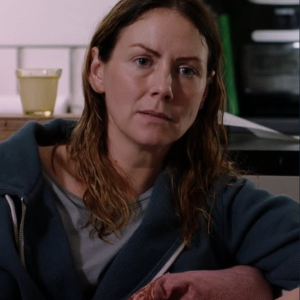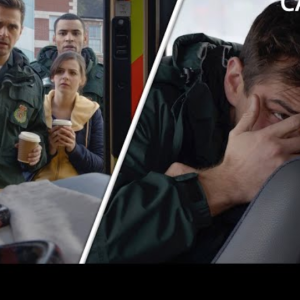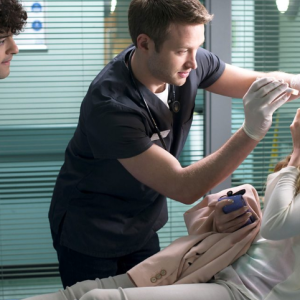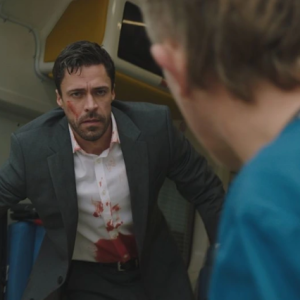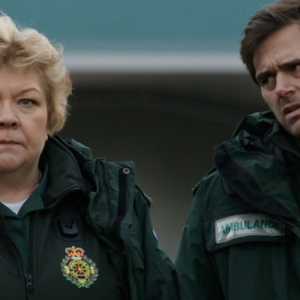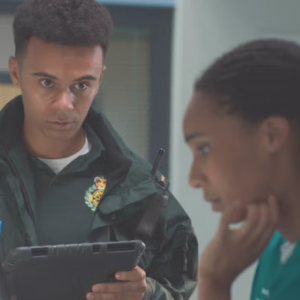The latest installment of Casualty under the storyline “Deadly Chlorine Leak At Swimming Pool! | Supply And Demand” plunges the audience straight into suffocating tension, blending professional suspicion with catastrophic danger. The episode opens with a quiet but sharp confrontation between Iain and Jacob, their conversation weighted with mistrust. Iain hesitantly reveals that ED has flagged irregularities in morphine dosages, raising the alarming possibility that someone has been withholding pain relief from patients or even stealing it for themselves. Jacob, already burdened by past accusations and personal demons, bristles immediately, perceiving suspicion directed squarely at him. “So you think it’s me?” he demands, his anger sharp and raw. Iain insists he is trying to help, but his words only inflame the wound, because underneath the professional facade lies the deeper implication of betrayal between colleagues who should trust each other with their lives. The tension crescendos with Jacob’s furious repetition—“You’re trying to help me?!”—as if the very concept of assistance has turned into an accusation. This toxic mistrust is cut short by the shrill interruption of real crisis: a patient coughing violently, the smell of chlorine thickening in the air, and the horrifying realization that a chemical leak is unfolding in real time.
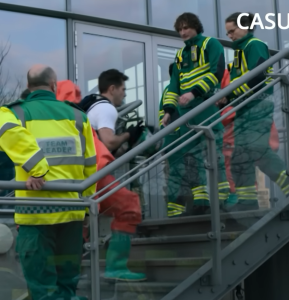
Suddenly, the narrative shifts gears from suspicion to survival. Chlorine gas, invisible and merciless, begins to spread through the pool complex, turning a routine assessment into a mass evacuation. Lifeguards blow whistles frantically, alarms blare, and the once-cheerful swimming pool transforms into a battlefield of chaos. Children splash and scream as parents scramble to shepherd them to safety, while paramedics bark urgent instructions: “Can I get everyone out of the pool please? Go, go, go!” The suffocating urgency is palpable—chlorine burns the lungs, corrodes the throat, and strips the body of air. Among the flurry of fleeing families, the detail of one lifeguard sneaking vapes in the pump room adds a tragic note of negligence, a tiny act of recklessness that may have fed catastrophe. But before the fire service can lock down the area, a chilling revelation cuts through: an 11-year-old girl, Annie, is missing. Her distraught mother, clutching at hope and panic, describes her blonde hair, blue eyes, and the terrifying truth that she hasn’t been seen since the evacuation began. The air grows heavier, not only with chlorine but with dread. Time is slipping away, and the stakes elevate from collective threat to the intimate, desperate fight for one child’s life.
Iain, already under fire for his judgment earlier in the shift, dives once more into reckless courage. Ordered to hold back, told bluntly by Tim over the radio that he “won’t make it,” Iain ignores the chain of command and plunges deeper into the poisonous fog. His radio crackles with restraint—“Get out now! That was an order!”—but Iain answers with action, driven by instinct and compulsion rather than reason. Through the acrid haze, he finds Annie, frightened and struggling for air. He crouches low, voice hoarse but steady: “My name’s Iain. I’m going to get you out of here.” The claustrophobic terror of the scene intensifies as he urges her to reach out, to take his hand, while his own oxygen dwindles dangerously. Tim’s voice warns again—stop talking, conserve air, drag her if necessary—but Iain pushes forward, every breath a gamble, every second a countdown. The drama is not just in the rescue but in the reckless way Iain throws himself against death itself, as though saving Annie is not only his duty but his redemption.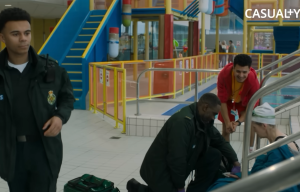
The oxygen alarms wail in shrill protest, signaling doom. A continuous beep warns of critical depletion, then escalates into rapid, high-pitched shrieks that hammer the urgency home: Iain is out of time. He gasps desperately inside the suit, choking on air that isn’t there, even as he clutches Annie and drags her toward salvation. The image is one of dual peril—the child’s small, vulnerable frame juxtaposed against the towering paramedic collapsing under his own sacrifice. Over the radio, Tim’s instructions are brutal in their clarity: “Get her out, then you can go back for him.” It is a doctrine of triage, of pragmatism over sentiment, but to the audience it feels like a moral knife twist. Can a system that teaches rescuers to prioritize so coldly ever reconcile with the messy, flawed humanity of men like Iain, who are driven by something rawer than training? The chlorine fog becomes a metaphor here—an invisible, corrosive force, not just chemical but emotional, eating away at trust, loyalty, and survival.
By the end of the sequence, the audience is left gasping as much as the characters. The chlorine leak may be contained, the evacuation largely successful, but the lingering questions are toxic in their own right. Who is truly responsible for the morphine discrepancies that seeded mistrust between Iain and Jacob? How long can Iain continue to gamble his life on instinct rather than protocol before the odds finally claim him? And what does it mean for a team when suspicion festers in its ranks, when the bonds that should be unbreakable are corroded by doubt? Casualty thrives on this blend of physical danger and psychological fracture, and in this episode it delivers both with suffocating intensity. The rescue of Annie is a triumph, but it is laced with the bitter taste of recklessness and the haunting knowledge that not all wounds are visible. Chlorine chokes the lungs, but mistrust chokes the heart, and as the credits roll, the audience is left suspended in that gasping silence, wondering not only who will survive the next crisis but whether this team can ever truly breathe together again.
